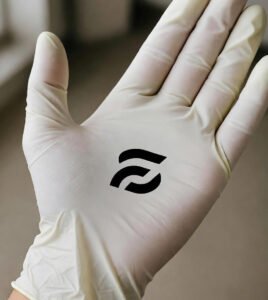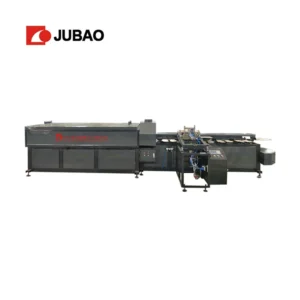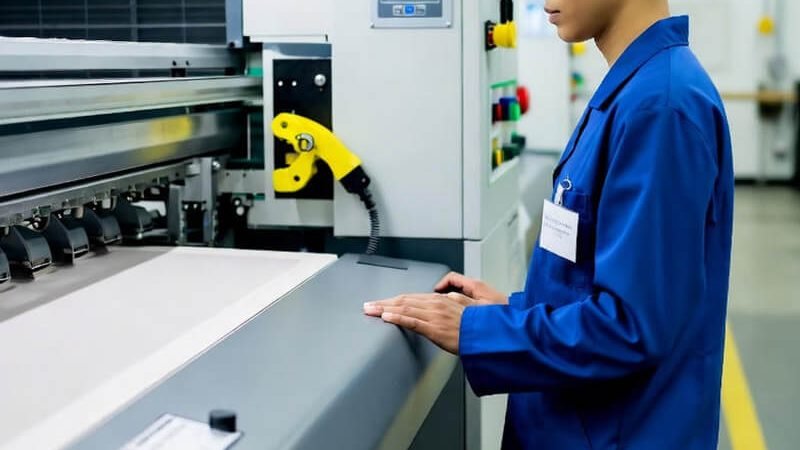How Do They Print Logos on the Palm of Gloves?
Table of Contents
- Introduction
- Screen Printing: The Traditional Method
- Pad Printing: Precision for Curved Surfaces
- Heat Transfer Printing: Detailed Graphics
- Digital Printing: Modern Innovation
- Embossing and Debossing Techniques
- Latex and Polymer Dipping Methods
- Glove Printing Machine Technology
- Quality Control and Durability Testing
- Conclusion
Introduction
Have you ever wondered how manufacturers achieve those crisp, durable logos and patterns on work gloves, sports gloves, and protective equipment? The process of printing logos on glove palms combines traditional craftsmanship with modern technology to create functional designs that enhance grip, brand recognition, and aesthetic appeal. Understanding these printing methods reveals the sophisticated engineering behind what might seem like a simple decorative element.
Screen Printing: The Traditional Method
Screen printing remains one of the most popular methods for applying logos to glove palms due to its cost-effectiveness and durability. This technique involves creating a stencil, or screen, through which specialized inks are pressed onto the glove surface. The process works particularly well for bold, simple designs with limited colors.
During screen printing, the glove is positioned on a flat surface or specialized form that mimics the hand shape. Ink is then pushed through the screen mesh using a squeegee, transferring the design onto the palm material. For multi-color logos, multiple screens are used in sequence, with each screen applying a different color layer. The ink is then cured using heat or UV light to ensure permanent adhesion to the glove material.
This method excels at producing high-volume runs with consistent quality. The printed logos can withstand repeated washing, friction, and exposure to various chemicals, making screen printing ideal for industrial work gloves and sports equipment where durability is paramount.

Pad Printing: Precision for Curved Surfaces
Pad printing, also known as tampography, is specifically designed to transfer images onto three-dimensional and irregularly shaped objects like glove palms. This method uses a silicone pad to pick up ink from an etched plate and transfer it to the glove surface. The flexible silicone pad conforms to the contours of the glove, ensuring even coverage across curved surfaces.
The process begins with the design being etched onto a metal plate called a cliché. Ink is applied to this plate, filling the etched areas. A doctor blade then removes excess ink, leaving ink only in the recessed design areas. The soft silicone pad presses down onto the plate, picking up the ink, and then transfers it to the glove palm with precise pressure and positioning.
Pad printing is particularly effective for small, detailed logos and can handle multiple colors through sequential printing. This technique is commonly used for safety gloves that require certification marks, brand logos, and size information printed in small, precise areas.
Heat Transfer Printing: Detailed Graphics
Heat transfer printing allows for complex, multi-colored designs with photographic quality. This method involves printing the desired logo onto special transfer paper or film, which is then applied to the glove palm using heat and pressure. The heat activates adhesive properties in the ink, bonding it permanently to the glove material.
There are two primary types of heat transfer used in glove manufacturing. Hot peel transfers are removed immediately after pressing while still hot, resulting in a smooth finish that integrates well with the glove material. Cold peel transfers are allowed to cool before the backing is removed, producing a slightly raised texture that can enhance grip properties.
This printing method is ideal for promotional gloves, custom sports equipment, and fashion-oriented protective gear where visual appeal is as important as functionality. The transferred designs can include gradients, photographs, and intricate details that would be impossible with traditional printing methods.
Digital Printing: Modern Innovation
Digital printing technology has revolutionized logo application on gloves by eliminating the need for screens, plates, or transfer papers. Direct-to-garment printers modified for glove printing can apply logos directly onto the palm surface using specialized inks that bond with various glove materials including leather, synthetic fabrics, and coated textiles.
The process begins with a digital file of the logo, which is sent directly to the printer. The glove is positioned on a platen, and the printer head moves across the surface, depositing tiny droplets of ink to build up the image. Modern digital printers can achieve remarkable detail and color accuracy, reproducing even complex logos with photographic precision.
Digital printing offers significant advantages for small production runs and custom orders. Without setup costs for screens or plates, manufacturers can economically produce single gloves or small batches with unique designs. This flexibility makes digital printing perfect for personalized safety equipment, custom team gear, and prototype development.
Embossing and Debossing Techniques
Embossing and debossing create three-dimensional logos on glove palms through mechanical pressure rather than ink application. Embossing raises the design above the surface, while debossing presses it below the surface level. These techniques are often combined with other printing methods to create tactile branding that also enhances grip.
The process uses heated dies or stamps that are pressed into the glove material under controlled pressure and temperature. For leather gloves, the heat and pressure permanently reshape the material fibers. For synthetic gloves, the temperature must be carefully controlled to avoid damaging the material while achieving the desired depth and clarity.
Many high-end work gloves feature embossed logos that serve dual purposes. The raised pattern provides additional grip texture while simultaneously displaying brand identity. This technique is particularly popular in leather work gloves and premium sports equipment where both functionality and aesthetics matter.
Latex and Polymer Dipping Methods
For gloves with rubberized palms or coated surfaces, logos can be applied through specialized dipping techniques. This method involves creating a mold or mask with the logo design, then dipping the glove into liquid latex, nitrile, polyurethane, or other polymer solutions. The coating adheres everywhere except where the mask blocks it, creating a logo in relief.
Alternatively, manufacturers can apply colored polymer coatings in the logo shape over an existing palm coating. This technique creates highly durable logos that are integral to the glove’s grip surface rather than simply printed on top. The logo becomes part of the functional coating, ensuring it won’t wear off even under extreme use conditions.
This method is commonly seen on construction gloves, gardening gloves, and industrial protective equipment where the palm coating provides essential grip and protection. The logo application process integrates seamlessly with the coating production, making it efficient for high-volume manufacturing.

Glove Printing Machine Technology
Modern glove printing machine technology has transformed logo application from a labor-intensive manual process to a highly automated, precise operation. These sophisticated machines integrate multiple printing technologies into streamlined production lines that can handle thousands of gloves per hour while maintaining consistent quality.
A comprehensive glove printing machine system typically includes several key components. Automatic feeding mechanisms position gloves correctly on printing platens or forms that support the palm during printing. Precision registration systems ensure that multi-color prints align perfectly, critical for complex logo designs. Advanced sensor technology monitors ink application, curing temperatures, and print quality in real-time.
Modern glove printing machine models incorporate servo motors for precise movement control, touchscreen interfaces for easy operation, and programmable logic controllers that can store hundreds of different logo specifications. This automation allows operators to switch between different glove styles and logo designs quickly, minimizing downtime and maximizing production efficiency.
The latest generation of glove printing machine equipment also includes integrated curing systems. UV curing units, infrared dryers, or convection ovens are built into the machine line, ensuring that printed logos are fully cure
